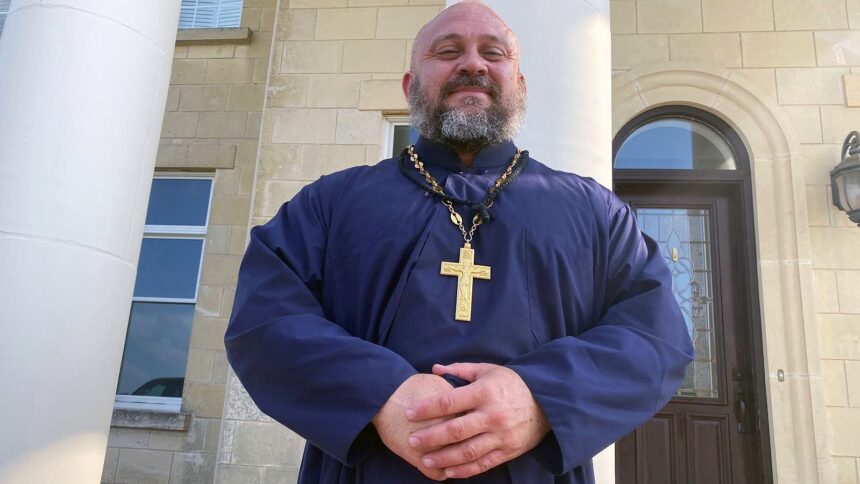An Emerging Trend: Young American Men Find Faith in Russian Orthodoxy
In an intriguing cultural shift, young men in the United States are increasingly turning to the Russian Orthodox Church, drawn by its traditional views on masculinity. This unexpected trend has led to a notable rise in congregations such as that led by Father Moses McPherson in Georgetown, Texas, where membership has tripled in just 18 months.
Father Moses has gained a following through his energetic online presence, particularly on platforms like YouTube, where he advocates for a robust form of masculinity. He discourages behaviors he considers effeminate, such as wearing skinny jeans, openly demonstrating emotions, or even enjoying soup. Clad in a priest’s garb and showcasing his muscular physique, he often shares videos of himself lifting weights to the sounds of heavy metal music.
A Search for Meaning
Many of his congregants, like Theodore—a software engineer who once eschewed religion—attribute their conversions to a desire for purpose in an increasingly chaotic world. Theodore expressed feeling unfulfilled despite a dream job and a loving wife, citing societal pressure that labels traditional male roles as “toxic.” He and many others in the Orthodox faith are opting for home-schooling, believing women should focus on family rather than careers, thus preserving family values.
Father John Whiteford, a prominent archpriest in the ROCOR, explains that home-schooling not only provides religious education but also shields children from contemporary societal discussions on topics like gender identity. This perspective appears to resonate with many converts seeking solidarity amid changing norms in America.
Growing Community
The appeal of the Orthodox Church, particularly ROCOR, appears to be widening, despite its small size compared to evangelical megachurches, which dominate the American religious landscape. The community consists primarily of men, a trend backed by data indicating that male converts to Orthodox Christianity rose to approximately 64% in recent years.
| Year | Percentage of Male Converts | Notable Factors |
|---|---|---|
| 2007 | 46% | Traditionalism in religion |
| 2021 | 64% | Pandemic influence, search for meaning |
Despite the relatively small size of the Orthodox community, it has become more vocal, reflecting broader political and social narratives. According to Professor Scott Kenworthy from Cincinnati, the flow of newcomers seeking baptism is not isolated, as many parishes across the country report similar growth.
Cultural Connections
Some converts, like Buck Johnson—a firefighter with a passion for history—have expressed concerns over mainstream media narratives about Russia. He believes that Russia’s commitment to conservative values aligns with their rejection of Western liberalism. As the Russian Orthodox Church gains attention as a defender of Christian principles, it attracts individuals seeking an alternative to American consumer culture.
Father Moses articulates that Orthodoxy is not about being masculine but rather about embracing a robust norm, stating that contemporary Western society has become overly feminized. While he admits that some visitors to his church come with preconceived notions of its rigidity and traditionalism, he welcomes them into a community where faith, family, and personal growth are central.
As this trend continues to develop, the Russian Orthodox Church remains an intriguing focal point for many seeking meaning and direction amid the complexities of modern life in America.




